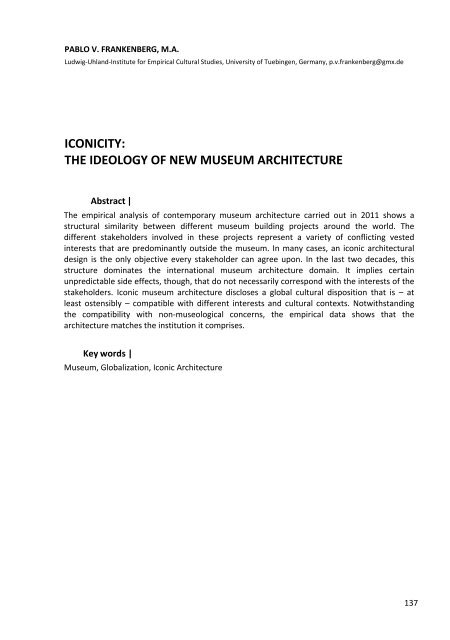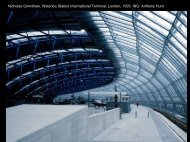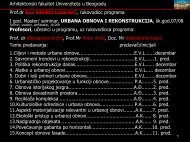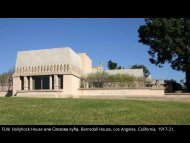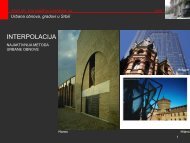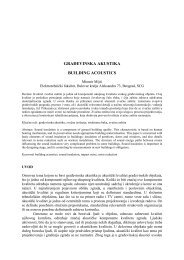Architecture and Ideology
Architecture and Ideology
Architecture and Ideology
You also want an ePaper? Increase the reach of your titles
YUMPU automatically turns print PDFs into web optimized ePapers that Google loves.
PABLO V. FRANKENBERG, M.A.<br />
Ludwig‐Uhl<strong>and</strong>‐Institute for Empirical Cultural Studies, University of Tuebingen, Germany, p.v.frankenberg@gmx.de<br />
ICONICITY:<br />
THE IDEOLOGY OF NEW MUSEUM ARCHITECTURE<br />
Abstract |<br />
The empirical analysis of contemporary museum architecture carried out in 2011 shows a<br />
structural similarity between different museum building projects around the world. The<br />
different stakeholders involved in these projects represent a variety of conflicting vested<br />
interests that are predominantly outside the museum. In many cases, an iconic architectural<br />
design is the only objective every stakeholder can agree upon. In the last two decades, this<br />
structure dominates the international museum architecture domain. It implies certain<br />
unpredictable side effects, though, that do not necessarily correspond with the interests of the<br />
stakeholders. Iconic museum architecture discloses a global cultural disposition that is – at<br />
least ostensibly – compatible with different interests <strong>and</strong> cultural contexts. Notwithst<strong>and</strong>ing<br />
the compatibility with non‐museological concerns, the empirical data shows that the<br />
architecture matches the institution it comprises.<br />
Key words |<br />
Museum, Globalization, Iconic <strong>Architecture</strong><br />
137


